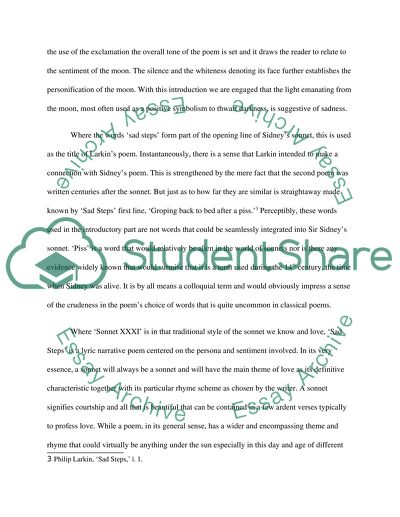Cite this document
(“A comparative analysis of 'Sonnet XXXI' by Sir Philip Sydney and 'Sad Essay”, n.d.)
Retrieved from https://studentshare.org/literature/1494643-a-comparative-analysis-of-sonnet-xxxi-lines
Retrieved from https://studentshare.org/literature/1494643-a-comparative-analysis-of-sonnet-xxxi-lines
(A Comparative Analysis of 'Sonnet XXXI' By Sir Philip Sydney and 'Sad Essay)
https://studentshare.org/literature/1494643-a-comparative-analysis-of-sonnet-xxxi-lines.
https://studentshare.org/literature/1494643-a-comparative-analysis-of-sonnet-xxxi-lines.
“A Comparative Analysis of 'Sonnet XXXI' By Sir Philip Sydney and 'Sad Essay”, n.d. https://studentshare.org/literature/1494643-a-comparative-analysis-of-sonnet-xxxi-lines.


